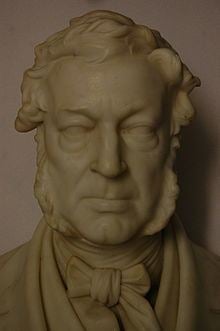Cause of death Chronic bronchitis Awards Vulcan medal Role Engineer | Nationality British (from 1856) Name Augustus Siebe | |
 | ||
Known for Innovations in diving apparatus Died April 15, 1872, Denmark Street, London, United Kingdom | ||
Christian Augustus Siebe (known by his middle name; 1788 – April 15, 1872) was a German-born British engineer chiefly known for his contributions to diving equipment.
Contents
For his life history see Siebe Gorman.Contribution to diving
In the 1830s the Deane brothers asked Siebe to make a variation of their smoke helmet design for underwater use. Later they turned to him to produce more helmets for diving operations. Expanding on improvements already made by another engineer, George Edwards, Siebe produced his own design; a helmet fitted to a full length watertight canvas diving suit. The real success of the equipment was a valve in the helmet.
Colonel Charles Pasley, leader of the Royal Navy team that used Siebe's suit on the wreck of the HMS Royal George suggested the helmet should be detachable from the corset, giving rise to the typical standard diving dress which revolutionised underwater civil engineering, underwater salvage, commercial diving and naval diving.
The company that carried his name Siebe Gorman Ltd was founded by him and his son-in-law, Gorman.
He is commemorated by a blue plaque on his former home in Denmark Street, London.
Other inventions
Besides his contributions to diving he also invented:
Siebe won many medals at the Great Exhibition in 1851 and the Paris Exhibition in 1855.
He died April 15, 1872 of chronic bronchitis, at his London home. He was buried at the West Norwood Cemetery.
